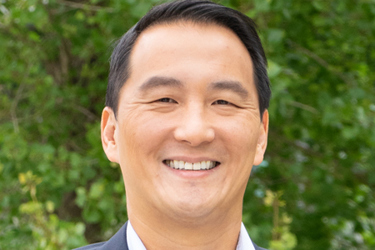Companies To Watch: Senti Bio

By Ben Comer, Chief Editor, Life Science Leader

Using ‘logic gates’ to improve cell therapies in oncology
Snapshot
Senti Bio cofounder and CEO Tim Lu, MD, Ph.D., a Harvard and MIT engineer by training, invented a “logic gating” technology to reduce cell therapy toxicities in oncology. Logic gating, an electrical engineering term, refers (in this context) to a customizable “gene circuit,” or multi-gene construct capable of identifying cancer targets on both healthy and diseased cells. Senti Bio’s therapies are designed to recognize multiple targets and are designed to turn on or off at the right time, avoiding damage to healthy cells, or to only activate in the right place, says Lu. The company’s lead candidate is an allogeneic CAR NK cell therapy targeting relapse/refractory AML, which reported positive Phase 1 data in December 2024. Senti-301A, the company’s second clinical candidate, is also in early-stage clinical trials, and targets hepatocellular carcinoma (HCC). Senti-301A is being developed in China with partner Celest Therapeutics.
What’s At Stake
The central problem in developing safe and effective cancer therapeutics today, explains Lu, boils down to a basic dilemma: how to tell the difference between a cancer cell, and a healthy cell. In that context, the search for targets like HER2 or TROP2, for example, are really searches for targets that drugs can kill indiscriminately without affecting healthy cell populations. The result of those target discoveries — while critically important — has led to “a ton of crowding in the space with the same target but different modalities, because there are only so many clean targets out there,” says Lu.
Senti Bio aims to solve this problem by building therapies that can recognize multiple targets, instead of relying on a single target. The company is developing therapies capable of sensing targets on cancer cells, and killing them, but also sensing healthy targets, which the therapies will avoid. “If we’re successful, I think it will open up a lot of indications that you can’t currently treat with other approaches,” says Lu.
Effectively treating most diseases requires more than eliminating a single target or fixing a single mechanism, says Lu. To go after multiple targets with a cell therapy, “you need to be able to control what the cells are doing, where the cell is going, and when it turns on and off … those behaviors require a more sophisticated genetic engineering,” or what Senti Bio calls a gene circuit, which is a multi-gene construct. With cell therapy, that can mean putting two, three, or four genes into a cell, which are designed to recognize multiple targets, turn on or off, or only activate in right location, says Lu.
In AML, for example, new targets have emerged and generated excitement, only to fail in the clinic due to toxicities. Senti-202 is designed to activate and kill FLT3 and CD33 — two established targets in AML — but also to recognize and avoid a healthy antigen (endomucin) on a healthy cell. In this example, FLT3 and CD33 are the “gate,” while endomucin is the “not gate.” Together, they comprise the cell therapy’s logic gate, which is a type of gene circuit. This is accomplished by using two different CAR receptors: one that is an activating CAR that kills, and one that is an inhibitory CAR that doesn’t kill. The balance between the two creates the dynamic behavior necessary for safety and efficacy.
In addition to Senti-202 and Senti-301A, Senti Bio has preclinical partnerships with Roche-owned Spark Therapeutics and Bayer-owned BlueRock Therapeutics. In both cases, the partner companies wanted help making drugs more specific for identified targets: AAV gene therapies with Spark/Roche, and IPSC-derived cells with BlueRock/Bayer. In those partnerships, Senti Bio serves as the “design house” that created the genetic engineering and gene circuits, with the respective partners testing the candidates and potentially taking them forward for development, says Lu.
When it comes to cell therapy, “we are not purists,” says Lu, noting that while CAR NK cells make sense for AML, T cells could be useful for other applications. “We have purposely built our technology, our gene circuits, to work across modalities and are not wed to one particular thing. We really want to be practical about how we tackle problems.”
Vital Statistics
Employees: ~35
Headquarters: South San Francisco
Funding: PIPE financing of $37.6 million announced December 2, 2024, additional $10 million in gross proceeds announced on January 6, 2025
Significant Investors: Celadon Partners, New Enterprise Associates (NEA), Leaps by Bayer, Nantahala Capital, The Red Hook Fund LP, PharmaEssentia
